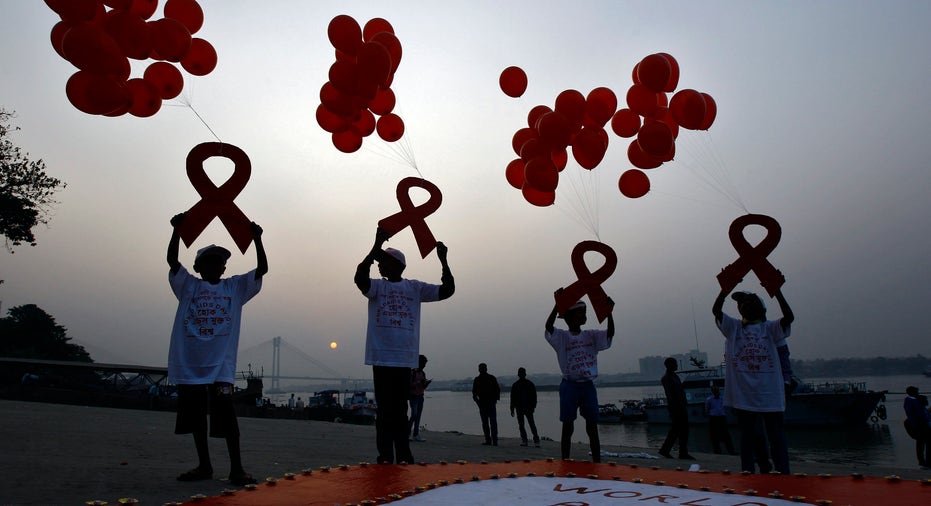The End of AIDS—Are We Any Closer?

It’s been more than three decades since the first documented case of HIV, the virus that causes AIDS, was reported in the U.S. Today, more than 1.2 million people in the U.S. are living with HIV, and almost 1 in 7 (14%) of those infected are unaware that they even have it.
As the number of people living with the virus has increased, the annual number of new infections has remained relatively stable -- but still high -- at 50,000 people per year, according to Center for Disease Control and Prevention.
“Just 40 percent of people with HIV are regularly receiving care and just 30 percent are virally suppressed. And rates of new HIV infections remain unacceptably high among gay and bisexual men of color and are on the rise in the youngest generation of men who have sex with men," says Eugene McCray, MD, Director of the Division of HIV/AIDS Prevention at CDC.
The good news is that researchers say they are closer than ever to developing a vaccine.
“I think we will get there. I think we’re closer than we were a year ago,” says Dr. Anthony Fauci, the Director of the National Institute of Allergy and Infectious Diseases (NIAID) at the National Institute of Health (NIH).
National Prevalence of HIV/AIDS by Year | HealthGrove!function(d,s,id){var js,fjs=d.getElementsByTagName(s)[0],p=/^https:/.test(d.location)?'https':'http';if(!d.getElementById(id)){js=d.createElement(s);js.id=id;js.src=p+"://cdn1.findthebest.com/rx/widgets.js";fjs.parentNode.insertBefore(js,fjs);}}(document,"script","ftb-widgetjs");
Fauci, who has been on the forefront of this epidemic from the beginning, says the problem is the body doesn’t handle the HIV disease very well. Finding the vaccine “will not be a simple straight forward approach but we are making a lot of progress,” he says.
As head of the NIAID, Dr. Fauci wields a $4.4 billion research budget which means he has his fingerprints on all things that affect infectious diseases.
“We partner with pharma companies and we do the basic research early on. Most of the drugs and vaccines available for infectious diseases went through our hands,” he says.
So, it’s hardly surprising he was recently named the most powerful man in medicine by The Medicine Maker, a monthly publication focusing on clinical, development and manufacturing fields for pharmaceuticals.
“He was a clear winner in the judges’ rankings because of his untiring work to improve global health. He has led NIAID for over 30 years, helping to bring new treatments to patients both in the USA and overseas,” says Charlotte Barker, Editor, The Medicine Maker.
And after more than three decades at NIH’s top post, Fauci says his ultimate career goal would be to see an AIDS-free generation.
“We have the tools, we just need to implement them. When I saw patients in the 1980’s who were infected with HIV they had a short survival rate of 6 to 8 months. Nearly 50% of them were dead within a 1 year. Now, with our advances someone in their mid-20’s who’s been affected can potentially live an additional 50 years. This is one of our most breathtaking taking advances in medicine,” he says.
Breathtaking is right.
For more than a decade, Gilead Sciences (GILD) has been a leader in the development of HIV medications. Currently, they have seven medications commercially available and are advancing a robust pipeline of next-generation therapeutic options.
“We’ve seen significant advances in the treatment of HIV, including the development and availability of Atripla (2006), the first single-tablet regimen, which allows patients to take their entire HIV regimen in one pill once daily. Since then, we’ve introduced two additional single-tablet regimens (Stribild and Complera) that help address the individual needs of patients,” says Andrew Cheng, MD, PhD, Executive Vice President of HIV Therapeutics and Development Operations at Gilead Sciences.
The company also has a drug called Truvada, which is the first FDA-approved means of preventing HIV infection. If an HIV-negative person takes the pill every day, he or she is nearly 99 percent protected from contracting the virus.
“We believe it is an important tool that, when taken as directed and used in combination with other prevention strategies, has the potential to help reduce new HIV infections,” says Cheng, who says the drug is used for PrEP (Pre-exposure prophylaxis). This is for people who do not have HIV but who are at substantial risk of getting it.
Fauci says the key to stomping out this virus is not necessarily finding a vaccine but using the advances we’ve made so far to better advantage. One of the most critical components in that effort is HIV screenings.
Percentage of Adolescents Testing for HIV/AIDS | HealthGrove!function(d,s,id){var js,fjs=d.getElementsByTagName(s)[0],p=/^https:/.test(d.location)?'https':'http';if(!d.getElementById(id)){js=d.createElement(s);js.id=id;js.src=p+"://cdn1.findthebest.com/rx/widgets.js";fjs.parentNode.insertBefore(js,fjs);}}(document,"script","ftb-widgetjs");
Gilead, in addition to developing treatments, is taking a proactive approach to reducing instances of the disease. “We work alongside public health officials and community groups to increase HIV testing and link newly diagnosed people to appropriate medical care,” says Cheng.
Studies show that a positive HIV test result is associated with as much as an 80% reduction in risk behavior.
"People who know their status are much more likely to take the steps needed to reduce transmission to their partner," says Cheng.
Fauci says "we're doing pretty good" but we can do even better if everyone simply does their part.